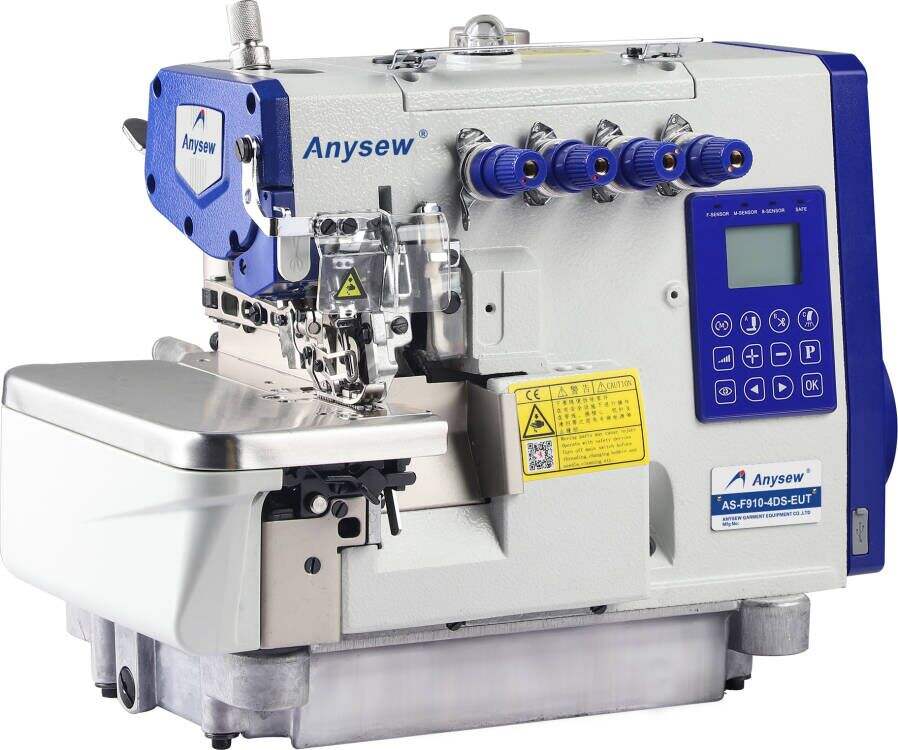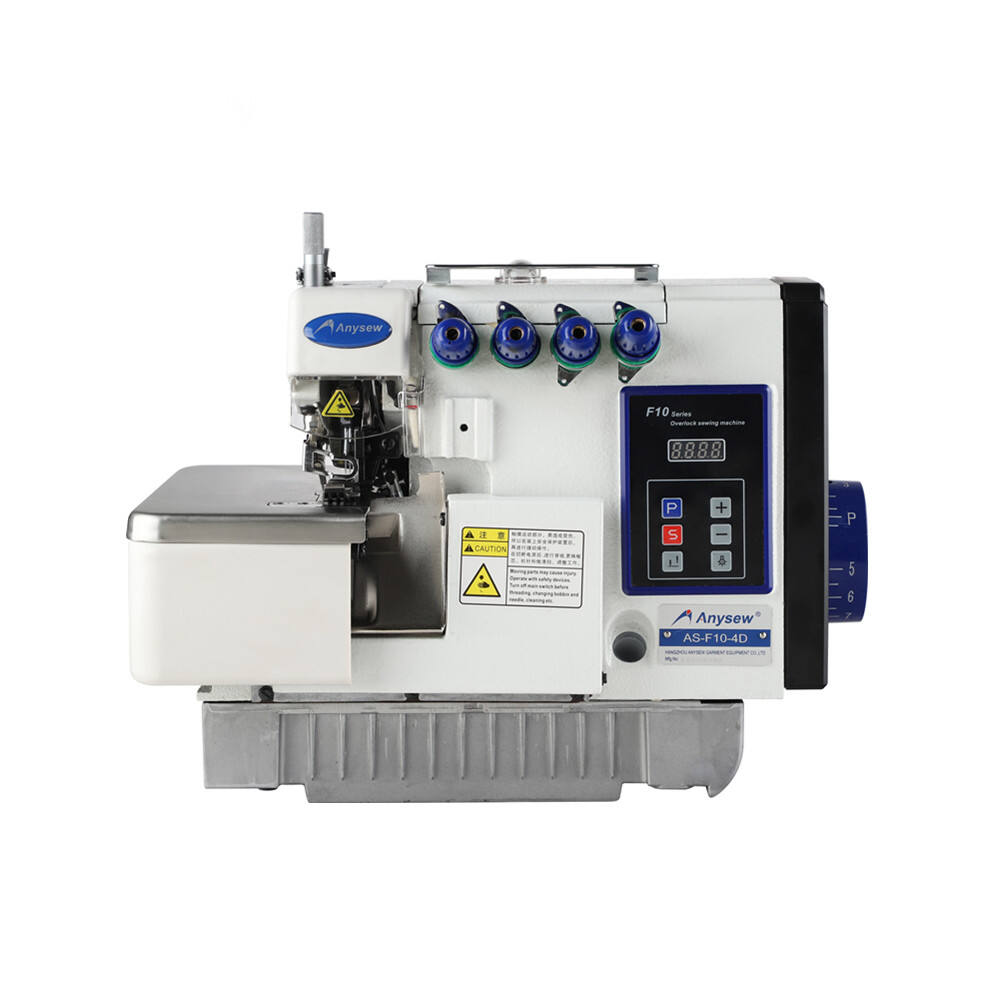Understanding the Revolutionary Impact of Overlock Technology in Modern Sewing
In the dynamic world of textile production and garment manufacturing, the overlock machine stands as a cornerstone of quality and efficiency. This specialized sewing equipment has transformed the way we create and finish garments, offering unprecedented precision and durability in seam construction. The impact of overlock technology extends far beyond basic edge finishing, revolutionizing both industrial production and home sewing practices.
The overlock machine represents a significant advancement in sewing technology, combining multiple functions into one seamless operation. By simultaneously trimming fabric edges, creating secure stitches, and encasing raw edges, it produces professional-grade seams that withstand regular wear and washing. This remarkable efficiency has made it an indispensable tool in modern garment production.
Core Components and Functionality of Overlock Machines
Essential Mechanical Elements
At the heart of every overlock machine lies a sophisticated system of components working in perfect harmony. The primary elements include multiple needle positions, specialized loopers, a cutting blade mechanism, and differential feed dogs. These components collaborate to create the distinctive overlock stitch pattern while maintaining fabric integrity.
The differential feed mechanism deserves special attention, as it controls the movement of fabric layers through the machine. This innovative feature prevents puckering and stretching, ensuring smooth seams even on challenging materials like knits and stretchy fabrics. The precision-engineered cutting system trims excess fabric while stitching, creating clean, professional edges in one efficient pass.
Advanced Threading Systems
Modern overlock machines feature sophisticated threading systems that, while initially appearing complex, are designed for maximum efficiency. Color-coded threading paths and automatic tension adjustments help maintain consistent stitch quality across different fabric types and thicknesses. The multiple thread paths enable various stitch configurations, from basic three-thread overlock to more specialized four or five-thread safety stitches.
The threading process, though requiring attention to detail, becomes second nature with practice. Many contemporary overlock machines incorporate air-threading technology or easy-threading systems, significantly reducing setup time and complexity. This advancement has made professional-quality overlocking more accessible to home sewists and small-scale producers.
Enhanced Seam Quality and Durability
Professional Edge Finishing
The overlock machine excels in creating clean, professional edges that resist fraying and maintain their appearance through repeated washing and wear. The wrapped edge stitch formation encases raw fabric edges completely, preventing unraveling while providing a flexible, durable seam. This level of finish is particularly crucial for garments made from woven fabrics, which are prone to fraying.
Beyond basic edge finishing, overlock machines can create decorative effects through various stitch width and length combinations. The ability to adjust stitch parameters allows for customized finishes suited to different fabric types and end uses. This versatility makes the overlock machine an invaluable tool for both functional and aesthetic seam treatments.
Strength and Flexibility in Seam Construction
The unique stitch formation of an overlock machine creates seams that are both strong and flexible. The multiple thread system distributes tension across the seam, preventing single-point failures that can occur with traditional straight stitches. This enhanced strength is particularly beneficial for garments that undergo frequent movement and stress.
The inherent flexibility of overlock stitches makes them ideal for stretchy fabrics and knit materials. The seams can expand and contract with the fabric without breaking or losing their shape. This characteristic is essential for activewear, lingerie, and other garments requiring both durability and flexibility.
Time and Material Efficiency Benefits
Streamlined Production Process
The overlock machine significantly reduces production time by combining multiple operations into one step. Traditional seam finishing methods often require separate cutting, stitching, and edge finishing operations. With an overlock machine, these tasks are accomplished simultaneously, dramatically improving efficiency in both commercial and home sewing environments.
The speed capabilities of modern overlock machines further enhance productivity. Many models can operate at speeds exceeding 1,500 stitches per minute while maintaining consistent stitch quality. This rapid operation, combined with the multi-function capability, translates to substantial time savings in garment production.

Material Conservation and Waste Reduction
The precise cutting mechanism of overlock machines minimizes fabric waste by trimming only the necessary amount of material. This efficiency is particularly valuable when working with expensive fabrics or in high-volume production settings. The ability to adjust cutting width allows for optimal material usage while maintaining seam integrity.
Additionally, the secure edge finishing provided by overlock stitches eliminates the need for additional seam allowance that would be required for other finishing methods. This reduction in seam allowance can result in significant material savings across large production runs, contributing to both cost efficiency and environmental sustainability.
Common Applications and Versatility
Garment Construction Applications
The overlock machine shines in various garment construction scenarios, from basic seaming to specialized applications. It excels in assembling knit garments, creating rolled hems on delicate fabrics, and finishing edges on everything from t-shirts to formal wear. The versatility of stitch types allows for appropriate finishes on different garment categories and fabric weights.
In activewear and swimwear production, the overlock machine's ability to create strong, flexible seams is particularly valuable. The stitches maintain their integrity during stretching and movement, while the clean finish enhances both appearance and comfort. This makes it an essential tool for manufacturing performance garments and athletic wear.
Home Décor and Industrial Applications
Beyond garment production, overlock machines prove invaluable in home décor and industrial applications. They excel in finishing edges of household textiles like tablecloths, napkins, and curtains, providing both durability and aesthetic appeal. The ability to handle multiple layers and heavy materials makes them suitable for upholstery and industrial textile applications.
The versatility extends to specialized industrial applications, where the overlock machine's strength and efficiency are crucial. From automotive textiles to medical supplies, the reliable seam quality and high production speeds make it an essential tool in various manufacturing sectors.
Frequently Asked Questions
What maintenance does an overlock machine require for optimal performance?
Regular maintenance includes cleaning lint and debris, oiling moving parts as recommended by the manufacturer, and ensuring proper needle condition. It's important to clean the machine after each significant use, check and replace needles regularly, and have professional servicing annually for optimal performance and longevity.
Can an overlock machine replace a standard sewing machine entirely?
While an overlock machine excels at seam finishing and certain construction techniques, it cannot completely replace a standard sewing machine. Some tasks like topstitching, buttonholes, and precise straight stitching still require a conventional sewing machine. The two machines complement each other in a complete sewing setup.
How do I choose the right thread type for my overlock machine?
Select threads specifically designed for overlock machines, usually labeled as serger or overlock threads. These threads are thinner and stronger than regular sewing thread, creating less bulk in the seams. Match the thread weight to your fabric type and always use good quality threads to ensure optimal stitch formation and durability.

